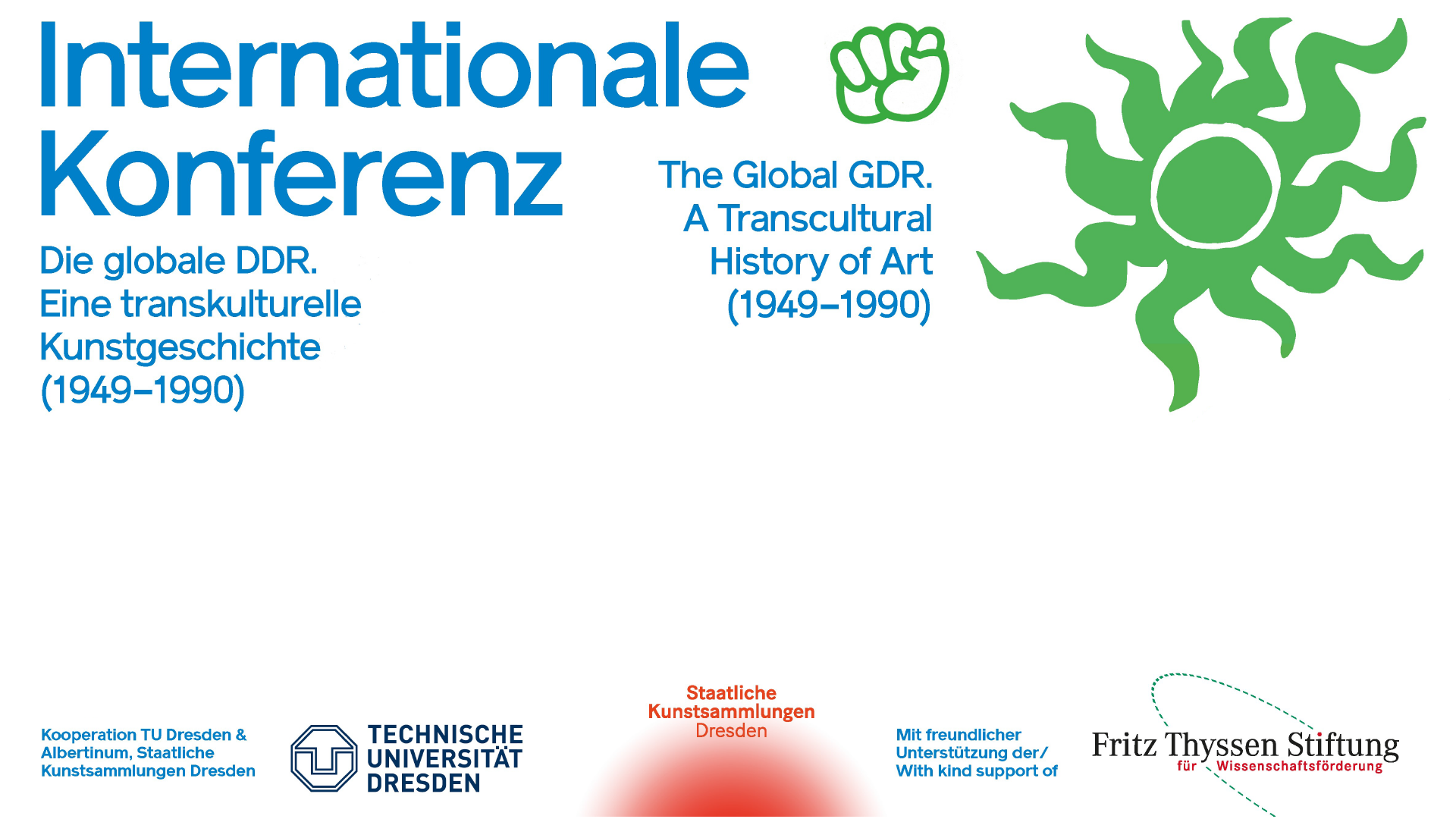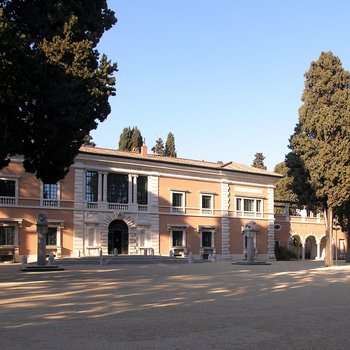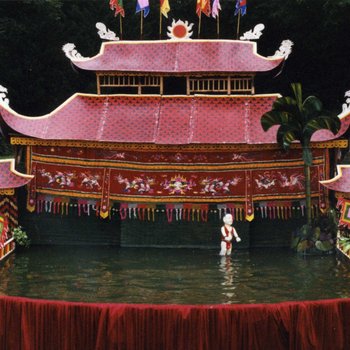From 9–11 June 2022, the Albertinum hosted the conference “The Global GDR – A Transcultural History of Art (1949–1990)”. This was organised by Kerstin Schankweiler, TU Dresden’s Professor of Visual Culture Studies in a Global Context, and her research associate Lena Geuer in cooperation with Kathleen Reinhardt and Mathias Wagner – curators at Staatliche Kunstsammlungen Dresden – and Gwendolin Kremer, a research associate at TU Dresden’s Office for Academic Heritage, Scientific and Art Collections. The event was made possible with the kind support of the Fritz Thyssen Foundation.
The international, interdisciplinary meeting of academics was devoted to a chapter in history that has so far attracted little research: the various ties between the GDR and other countries in the field of art. Among other things, East Germany’s international ties took the form of trips by artists, reciprocal study visits, exhibitions and artistic representations of the “other”. For the first time, the conference revealed the state of the research in German-speaking countries, adding further details from the perspective of former partner countries.

Tagung: Die globale DDR
© Tu Dresden
The conference programme focused on three main topics: Cultural Foreign Policy and Intercultural Encounters; Transcultural Socialist Aesthetics; and Practices Adopted in Work and Collaboration. To combine academic dialogue with the study of specific, as yet little-known works of art in this context, the conference was arranged in cooperation with TU Dresden’s Office for Academic Heritage, Scientific and Art Collections and Staatliche Kunstsammlungen Dresden (the SKD). It took place at the same time as the “Prologue” exhibition for the “Revolutionary Romances” project at the SKD’s Albertinum, and was accompanied by a workshop on the site of the TU Dresden art collections. The conference was driven by a desire to provide a transnational platform where people could debate different perspectives on art history and social history.
The event began with opening remarks by Hilke Wagner, director of the Albertinum (run by Staatliche Kunstsammlungen Dresden) and Roswitha Böhm, Vice-Rector for University Culture at TU Dresden. Kerstin Schankweiler introduced the topic and the conference programme.
Karl-Siegbert Rehberg chaired the first section, entitled “Cultural Foreign Policy and Intercultural Encounters”. In his introduction, he playfully posited that the title of the conference, “The Global GDR” would have pleased Erich Honecker, General Secretary of the SED. Rehberg outlined the importance of international connections and described the GDR’s efforts to gain international recognition, emphasising the importance of this artistic rendering of a global Socialist future.
Christian Saehrendt’s contribution portrayed the visual arts as a connecting element uniting a global socialist system. Saehrendt used historical press photographs to illustrate how, as well as networking, the elderly GDR politicians managed to “borrow” some of the charisma of young figures from culture and politics in newly emerging states, for instance on the African continent. Concluding this section, Annabel Ruckdeschel’s presentation described how the INTERGRAFIK was organised in the 1970s as an international exhibition and forum “for peace, friendship and anti‑Imperialist solidarity”. This important series of international exhibitions of works on paper offers great potential for research studying both its history and the details of the artworks and artists involved.
The lectures were followed by a curatorial tour with Kathleen Reinhardt and Mathias Wagner through the exhibition “Revolutionary Romances – Prologue. Transcultural Art Histories in the GDR” at the Albertinum. The curtain rises on the main act of that exhibition in the autumn of 2023. Lively debate and conversations about the exhibition topics were followed by a screening of the film “Namibia Today” and a discussion between the artist Laura Horelli and Kathleen Reinhardt. The final discussion further illustrated how rich the first day of the conference had been.
With Oliver Sukrow chairing, the second day of the conference began with topics related to Transcultural Socialist Aesthetics. Chương-Đài Võ presented her research on the concept of modernism in Vietnamese art history and made the case for her view that Socialist realism is an expression of modernism. Examining Ethiopian students in the GDR, Poland and the Soviet Union, Przemysław Strożek scrutinised the topic of international educational exchanges.
Andrea Giunta and Elena Shtromberg shifted the regional focus to South America, both lectures providing insights into connections between the GDR and South America that went beyond official cultural policy. Mail art networks, in particular, involved artists exchanging ideas personally, but also with a wide audience.
The lectures on the second day were supplemented by a visit to the storage facility for art owned by TU Dresden’s Office for Academic Heritage, Scientific and Art Collections. Gwendolin Kremer drew attention to the portraits of international students from the 1950s and 1960s that are found in the university’s art collection. At the same time, April Eisman led a curatorial tour of the exhibition “Angela Hampel. Artistic works” at Städtische Galerie Dresden.
Much to everyone’s regret, “Practices Adopted in Work and Collaboration”, the final section on the third day of the conference, chaired by Kerstin Schankweiler, comprised only two lectures due to illness. Presenting their project together, Carla Cortês and Nikolai Brandes showed how the GDR’s Building Academy influenced housing construction in Mozambique, thus adding the topic of architecture to the conference programme. An online contribution by Doreen Mende cast light on research practice on decolonialisation. A film by Sónia Vaz Borges, “A Transgenerational Commentary on a Song”, neatly summed up the artistic research on a song from Cape Verde that formed the background accompaniment to a mid-1970s student meet-up in Potsdam (GDR).
The conference “The Global GDR” provided an opportunity to approach the various topics relating to the GDR’s international connections from different research angles, and to discuss issues and ideas together. Apart from anything else, the variety of topics showed the size of this underexplored field. Among other things, it affirmed the current clear need for transnational research.

Also of interest:
Every year, the German Academy Rome Villa Massimo awards the Rome Prize to nine selected artists, enabling them to spend ten months in Rome. The artists' works from the last two years are on display this year in the exhibition "Eppur Si Muove - Und sie bewegt sich doch" ("And Yet She Moves") at the Japanisches Palais. Angela Windholz introduces the house and its program.

In the spring of 2020, a very special troupe of brightly coloured figures took up residence in the depot of the Puppentheatersammlung. Fishers and farmers, musicians and child gymnasts, not to mention ducks, water buffalos, dragons and fairies. They all belong to the classic cast of Vietnamese water puppetry.
